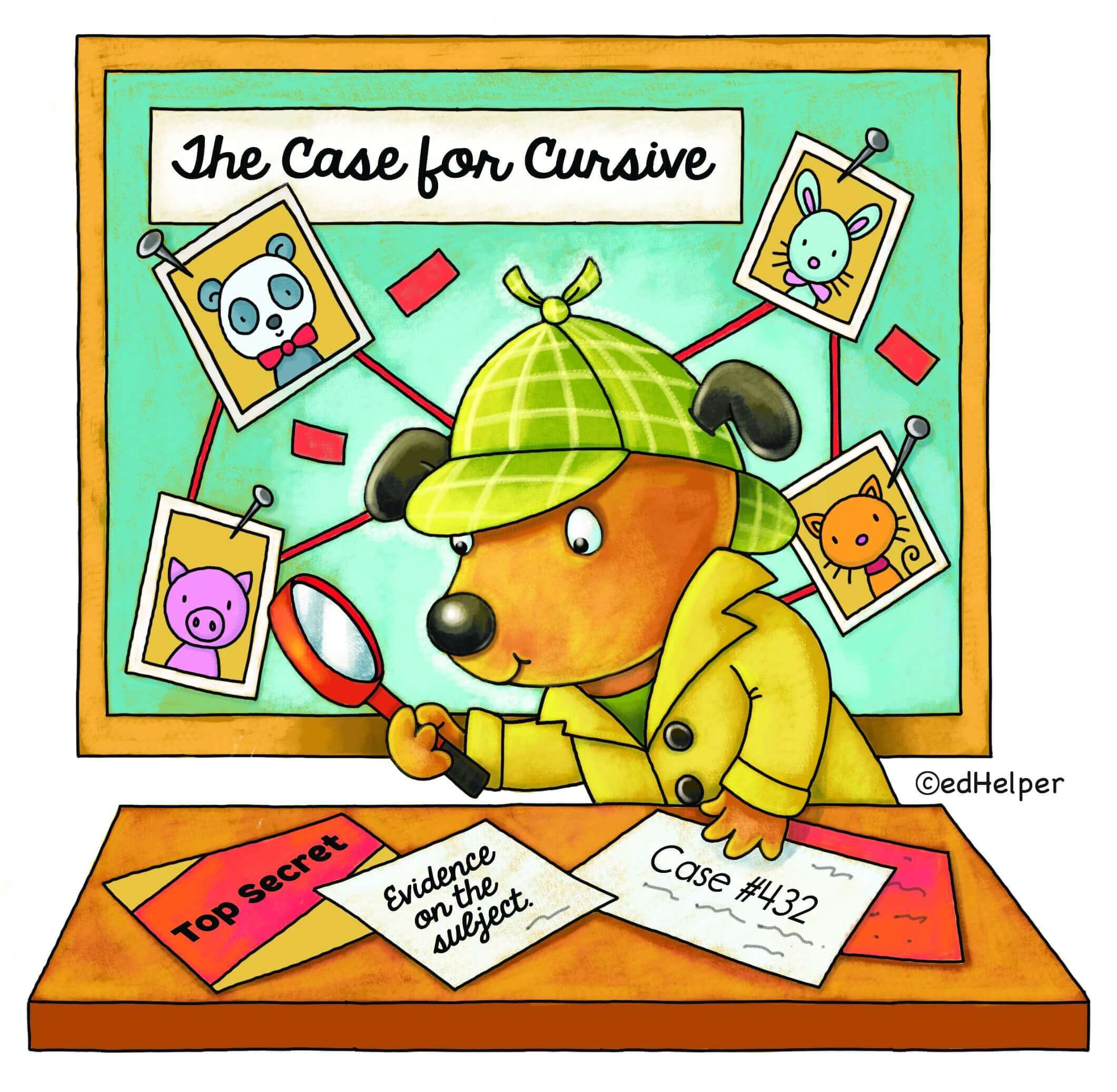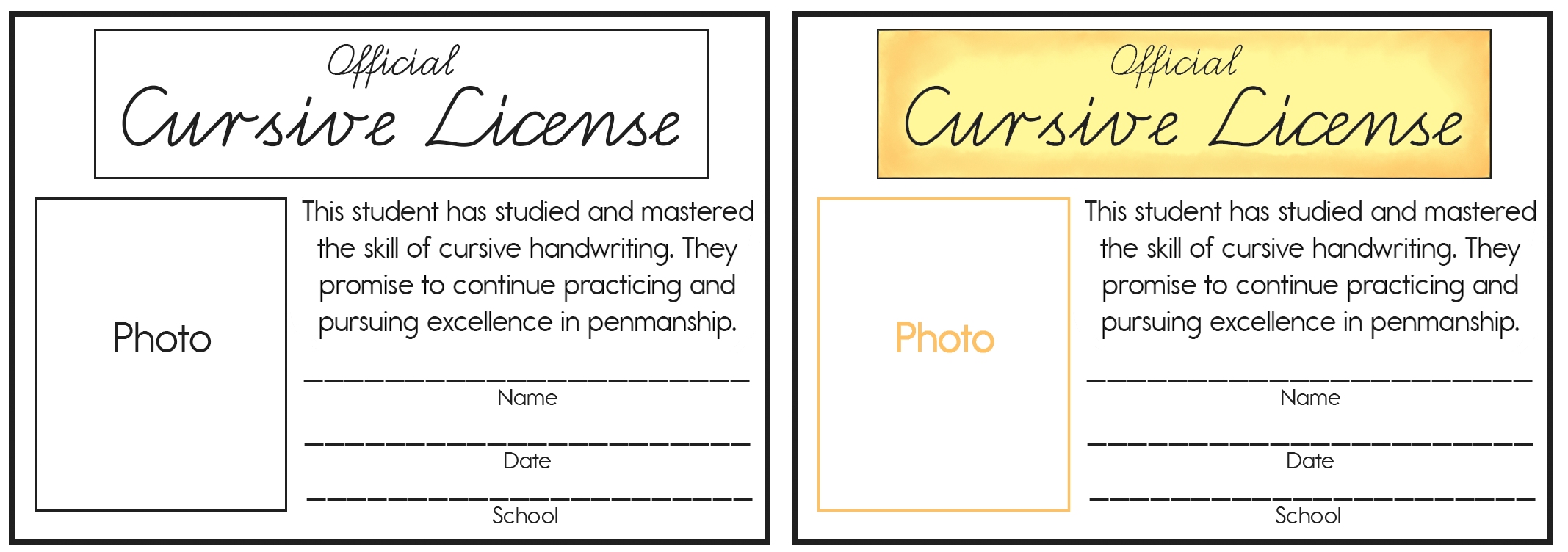Is There Still a Case for Cursive? (With Free Cursive Worksheets To Get Started)
By: edHelper Staff
Updated: Mar 11, 2020

Steve Jobs May Have Thought There Was a Case for Cursive!
Picture this: It's 2040. Your current students are now buying homes. They are writing checks. They are filling in marriage licenses and certificates. And they have to print on each and every document! Why? They don't have signatures! They don't know how to sign their names in cursive because cursive is no longer being taught in school!
We all recognize the power of the almighty hour within our classrooms. We've come to a time and place where items that aren't assessed are no longer taught (but that's a whole other artice....). The shift to the Common Core standards included the removal of cursive. It was seen as an "extra", dare we say waste of instructional time? Yikes!
But is there still a case for teaching cursive in the classroom? We found four compelling reasons why cursive should still be taught, even in the midst of your extremely structured day filled with countless objectives, standards, and assessments. Cursive is more than just connected letters. Cursive in and of itself is a form of connection.
1) Cursive connects us to history.
Think about every historical document you've ever seen. The Declaration of Independence; the scroll that literally declared America's freedom from England. It was not printed. It was written and signed in cursive. Nearly all of our ancient documents were. If we want our students to be in touch with the past, whether it's a piece of national history, an old diary, or recipe from a relative, our students need to be able to read cursive.
2) Cursive connects our ideas.
What's the biggest obstacle to writing in your classroom? It doesn't matter if we are talking about essays, personal narratives or short stories. The struggle is just getting our students to get something down on paper! We just want them to pour out all their thoughts and ideas onto the page for a first draft, then they can revisit their work to make changes and improvements. But they have to start somewhere. There's only so much power in a blank page! Our students have to get something written so they have something to revise. Writing in cursive is much faster than printing. The faster we can share our ideas in writing, the more ideas we're able to share. Think about all of those short-hand, quick notes, and scribbles on a pad that mean nothing to your neighbor but make complete sense to you? That's all cursive.
Research also supports the idea that hand-written notes are easier to remember. If we are teaching our students study skills, how to annotate text and take notes, we need to make sure that they are learning to write quickly. A college professor is not going to slow down her speech so that Suzi can keep up with her printing. While typing notes is an option, writing notes stimulates areas of the brain that help us internalize and remember content. The ability to write and read cursive is crucial for this!
3) Cursive connects with different types of learners.
Believe it or not, cursive is actually a form of differentiation. Printing, typing, and writing in cursive all use different brain patterns. For students who struggle with fine motor skills, cursive is also an important accommodation. Because it is faster than printing, it is easier for those who struggle with handwriting. If a student is focused on how frustrated he/she is with actually having to write, will they actually be focused on what they are writing? Probably not.
4) Cursive connects us with computers.
The common argument for removing cursive for the classroom is the belief that advancements in technology call for keyboard instruction more than cursive. As we continue to see laptops, hand-held devices, and phones seemingly glued to the hand of every member of society, we can certainly agree that keyboarding is an important skill. Everyone needs to know where to find those letters and how to type them quickly. The two-finger-hunt-and-peck method is not efficient! But have you ever looked at all of the different fonts available in your word processing program? Many of them are cursive! Before becoming the tech guru that most of us knew him to be, Steve Jobs was actually a very accomplished calligrapher. He understood, better than most, the power of beautifully written words. His passion for such lettering is part of why we have as many cursive fonts as we do. Keyboarding and cursive are not exclusive of one another. They are actually connected.
Try These Free Cursive Worksheets To Get Started
Get started with cursive handwriting in your classroom with free cursive handwriting worksheets.
Cursive Worksheets for Second Graders
Cursive Worksheets for Third Graders
Cursive Worksheets for Fourth Graders
Cursive Worksheets for Fifth Graders
Cursive lowercase c, a, d, g, h, t, p, e, l, and f Workbook
Cursive lowercase k, r, and s Workbook
Cursive lowercase m and n Workbook
Cursive lowercase o, w, b, and v Workbook
Cursive lowercase u, y, i, and j Workbook
Cursive lowercase x, q, and z Workbook
Cursive uppercase A, B, C, D, E, and F Workbook
Cursive uppercase G, H, I, J, K, L, and M Workbook
Cursive uppercase N, O, P, Q, R, S, and T Workbook
Cursive uppercase U, V, W, X, Y, and Z Workbook
Even if you agree that cursive has a place in your class, the million-dollar question is where and how do you start teaching it?
Without an adopted cursive program or mapped out curriculum, you may be wondering where to go. Thankfully, we found several resources (that won't cost you a million dollars!) that you can download and use today with your students.
If you're looking for a "Start Here Guide" we found it for you. This site will help you map out the order in which you should teach lowercase and then capital cursive letters. It's also filled with helpful hints to help make your handwriting instruction successful.
While cursive was introduced and taught in third and fourth grade, why not introduce younger students to cursive letters too? What if we allowed them to be exposed to the differences and similarities of printed letters? These cursive letter coloring pages do just that. You could print these back-to-back and use them for bell work. This would allow your students to connect the printed letter to the cursive letter at the same time. These could work well in a center. Younger students could trace printed and cursive letters in sand and then practice writing (and coloring) on the printed page.
Your older students will benefit from these ready-to-go FREE cursive writing practice sheets. You can choose from individual letters or download a writing challenge book. The challenge books include five different letters to help strengthen your students' skills. Did I mention they are ready-to-go and FREE?!
The secret sauce of teaching is helping our students see value in what they're learning. The age old, "When are we ever going to have to know this?" question is alive and well in most classes. It's easy for us to see why and when students will need cursive, but keeping cursive fun will help them see it as well. Check out these creative cursive activities that go beyond traditional practice. You and your students will love the app suggestions (remember cursive and technology really are connected!), art-inspired practice projects, and all-around fun ideas!
Looking for a way to celebrate once your students have learned all their letters? Why not award them a cursive license? Download this template, add a picture (use those free stickers you get at the beginning of the year with your class' photos) and have your students fill in their personal information. Then have them use their new cursive skills to sign their license. They'll need to know how to do this one day when they get their driver's license, but until then, they can carry their cursive card with pride!

Print These Cursive Licenses Awards!
Is there a case for cursive? We think so! The evidence points to a strong cursive connection and we think our students deserve it to help ensure their success.













